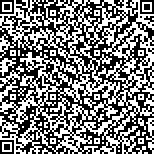娄普,尚清,周崇臣,娄欣霞,张会春,耿香菊.步态训练机器人对手足口病致急性弛缓性瘫痪患儿下肢功能影响[J].中华物理医学与康复杂志,2018,40(4):300-303
扫码阅读全文

|
| 步态训练机器人对手足口病致急性弛缓性瘫痪患儿下肢功能影响 |
| Robot-assisted gait training can improve lower limb function in cases of acute flaccid paralysis resulting from hand-foot-and-mouth disease |
| |
| DOI: |
| 中文关键词: 步态训练机器人 手足口病 急性弛缓性瘫痪 下肢功能 |
| 英文关键词: Gait training Robots Hand-foot-and-mouth disease Acute flaccid paralysis Lower limb function |
| 基金项目:河南省医学科科技攻关计划项目之重点项目(201402040);河南省自然科学基金资助项目(152300410002) |
|
| 摘要点击次数: 6061 |
| 全文下载次数: 6604 |
| 中文摘要: |
| 目的 观察步态训练机器人对手足口病(HFMD)所致急性弛缓性瘫痪(AFP)患儿下肢功能的疗效。 方法 将纳入的HFMD所致AFP患儿36例,按随机数字表法分为机器人组和对照组,每组18例,2组均采用常规康复训练治疗,机器人组在此基础上增加步态训练机器人训练,对照组给予相同时间瘫痪肢体按摩治疗。2组分别于治疗前和治疗15d后(治疗后),采用粗大运动功能测试量表中D功能区和E功能区评定站立与步行功能,用表面肌电分析系统测试患侧股四头肌电积分值,用Berg平衡量表评定患儿的平衡功能。 结果 治疗前,2组患儿的粗大运动功能测试量表评分、股四头肌电积分值、Berg平衡量表评分组间比较,差异无统计学意义(P>0.05),而治疗后,2组的上述3项观察指标均较组内治疗前有明显提高(P<0.01);治疗后组间比较,机器人组患儿的粗大运动功能测试量表评分[(60.72±11.54)分]和Berg平衡量表评分[(48.00±8.92)分]均明显优于对照组,且差异有明显统计学意义(P<0.01)。 结论 常规康复治疗上增加步态训练机器人训练对HFMD所致AFP患儿的下肢功能有更好的治疗效果,能够更好地促进患儿病情恢复。 |
| 英文摘要: |
| Objective To explore the effect of robot-assisted gait training on the standing and walking balance of persons with acute flaccid paralysis (AFP) resulting from hand-foot-and-mouth disease (HFMD). Methods Thirty-six persons with AFP resulting from HFMD were randomly divided into a control group and a training group, each of 18. Both groups were given conventional rehabilitation training, while the training group was additionally provided with robot-aided gait training. The control group received additional massage of their affected limbs. Before and after 15 days of treatment the subjects′ standing and walking ability were evaluated using parts D and E of the gross motor function (GMFM) scale. Their balance was quantified using the Berg balance scale (BBS) and integrated surface electromyograms were recorded. Results There were no significant differences between the two groups before the treatment. After 6 weeks of treatment the average scores of both groups had improved significantly, with a significantly bigger increase observed in the training group. After the treatment, the average GMFM and BBS scores of the training group were significantly higher than those of the control group. Conclusion Gait training in addition to conventional rehabilitation training can significantly improve the standing, walking and balance of patients with HFMD resulting from AFP and promote their recovery. |
|
查看全文
查看/发表评论 下载PDF阅读器 |
| 关闭 |